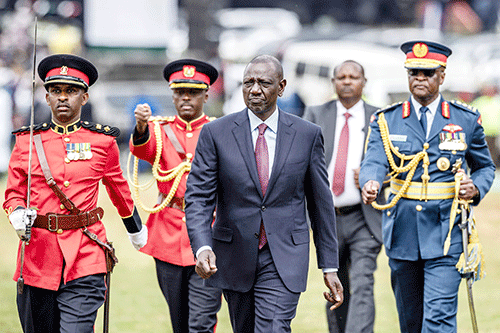NAIROBI – President William Ruto said on Tuesday that Kenya was emerging “out of debt distress”, touting his economic policies despite public anger over tax hikes and slashed subsidies as the country marked its 60th independence anniversary.
East Africa’s economic powerhouse has been struggling to manage multiple challenges, including depleted government coffers, high inflation and a plunging currency that has sent debt repayment costs soaring.
Kenya had accumulated more than 10.1 trillion shillings (US$66 billion) in debt by the end of June, according to Treasury figures, equivalent to around two-thirds of gross domestic product.
Speaking at a public ceremony in Nairobi to mark the former British colony’s Independence Day, Ruto said Kenya was now “safely out of the danger of debt distress”.
He did not provide any figures on the current levels of debt but said Kenya’s gross domestic product (GDP) had grown by 5.4% in the last six months.
“We have made the right choices, sometimes taken very difficult and painful decisions, to steer Kenya back from the edge of a catastrophic cliff of debt distress and move our country in a new direction,” he said. Ruto, who was elected last year on a pledge to ease conditions for ordinary Kenyans, has been on a campaign to slash public debt and “wasteful” government expenditure in the country of some 53 million people.
He has also cut food and fuel subsidies introduced by his predecessor and former boss Uhuru Kenyatta.
The cost of servicing public debt, mainly to China, has soared as Kenya’s currency has slumped to record lows of 153 shillings to the US dollar.
The government also has a US$2-billion-euro bond repayment due in June next year.
The Independence Day celebrations, which included a military parade as well as musical and dance performances, were held at Uhuru Gardens, a place steeped in Kenyan history.
It was there that independence was declared at midnight on 12 December 1963, on the site of a camp where British colonial authorities detained suspected Mau Mau guerrillas during the suppression of their 1952 to 1960 uprising.
At least 10 000 people were killed while tens of thousands of others were detained without trial in camps where reports of executions, torture, and vicious beatings were common. –Nampa/AFP


